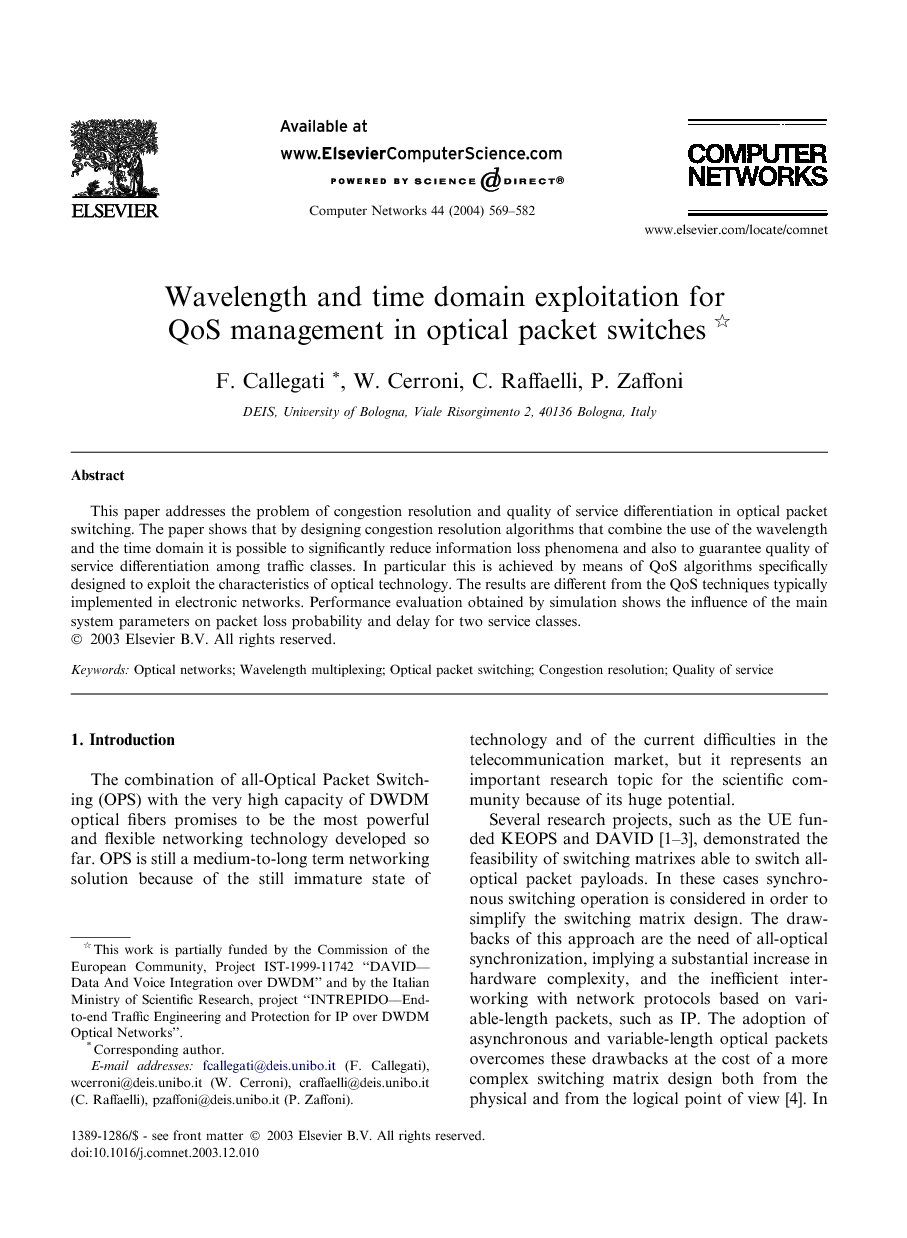ترجمه فارسی عنوان مقاله
طول موج و زمان بهره برداری حوزه مدیریت QoS در سوئیچ های بسته نوری
عنوان انگلیسی
Wavelength and time domain exploitation for QoS management in optical packet switches
| کد مقاله | سال انتشار | تعداد صفحات مقاله انگلیسی |
|---|---|---|
| 20256 | 2004 | 14 صفحه PDF |
منبع

Publisher : Elsevier - Science Direct (الزویر - ساینس دایرکت)
Journal : Computer Networks, Volume 44, Issue 4, 15 March 2004, Pages 569–582
ترجمه کلمات کلیدی
شبکه های نوری -
تسهیم طول موج -
سوئیچینگ بسته نوری -
رزولوشن تراکم -
کیفیت خدمات
کلمات کلیدی انگلیسی
Optical networks,
Wavelength multiplexing,
Optical packet switching,
Congestion resolution,
Quality of service,

